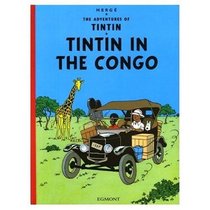Search -
Tintin in the Congo
Tintin in the Congo
Author:
In Tintin in the Congo, one of his earliest adventures, our intrepid reporter hunts down both criminals and wild game. The story was written in 1930 and first appeared in book form in 1931, and some of the parts are so dated that for years the book was unavailable in English. This edition reprints on black-and-white newsprint the original 1931 v... more »
Author:
In Tintin in the Congo, one of his earliest adventures, our intrepid reporter hunts down both criminals and wild game. The story was written in 1930 and first appeared in book form in 1931, and some of the parts are so dated that for years the book was unavailable in English. This edition reprints on black-and-white newsprint the original 1931 v... more »
ISBN-13: 9780320079788
ISBN-10: 0320079783
Publication Date: 1/1/1987
Pages: 80
Rating: ?
ISBN-10: 0320079783
Publication Date: 1/1/1987
Pages: 80
Rating: ?
0 stars, based on 0 rating
Publisher: French and European Publications Inc
Book Type: Hardcover
Other Versions: Paperback
Members Wishing: 6
Reviews: Amazon | Write a Review
Book Type: Hardcover
Other Versions: Paperback
Members Wishing: 6
Reviews: Amazon | Write a Review




